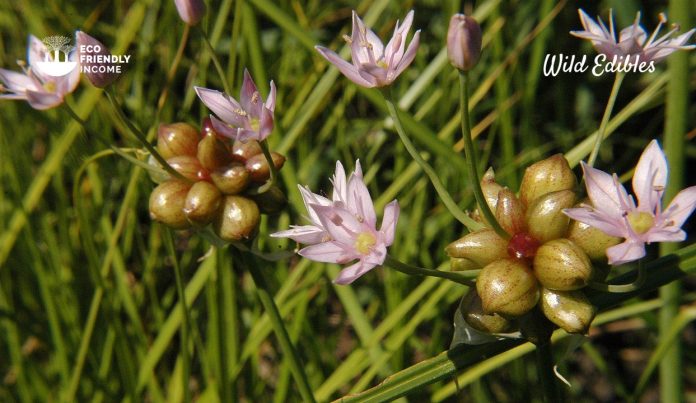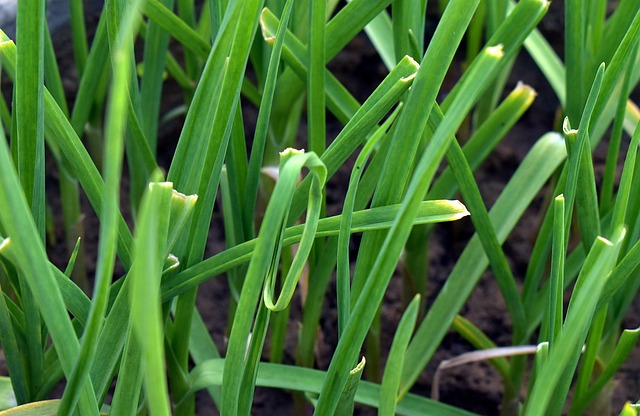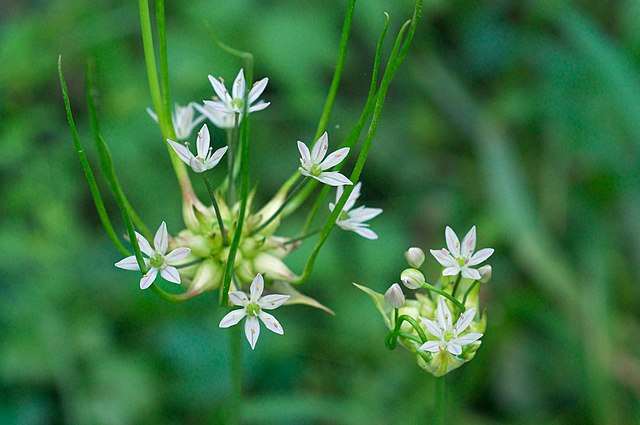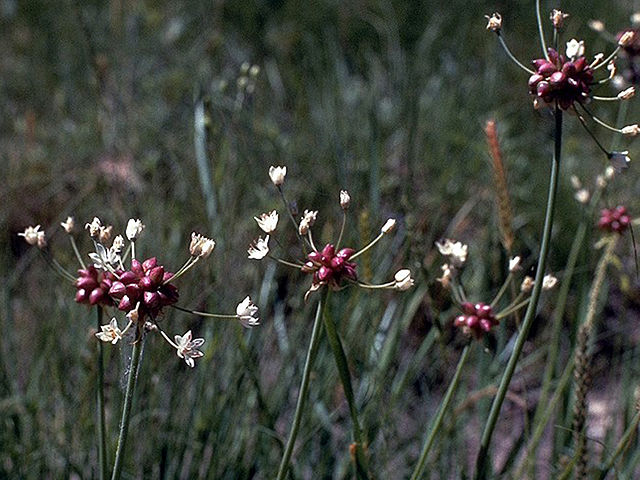
Cover photo by George F. Mayfield - CC BY-SA 2.0
A field guide on how to identify and propagate Meadow Garlic (Allium canadense), a hardy zone 2 perennial shrub that is native to North America.
Meadow garlic (Allium canadense) is a type of wild garlic that is native to North America. They grow in the eastern half of the continent, from Newfoundland to Minnesota, and down to Virginia.
Meadow garlic is relatively small, with a diameter of less than an inch. The skin is often brown or reddish in color, and the flesh is white. They have a strong, pungent flavor that is somewhat sweeter than the common garlic.
How to Identify Meadow Garlic (Allium canadense)
Leaves

Meadow garlic leaves have a linear shape, an entire margin (smooth), and grow in a basal arrangement on the stem. They measure from 6-12 inches long but only 2-3mm across.
Flowers

Meadow garlic (Allium canadense) has an 8-12 in. flowering stalk. The stem is topped by a dome-like cluster of star-shaped, pink or whitish flowers with a strong, onion-like odor.
Flowering Season
Meadow garlic’s blooming season is during early summer and can last up to 3 weeks.
Habitat
Wild Garlic is often found in moist to mesic black soil prairies, upland and floodplain woodlands, moist meadows near rivers and woodlands, thickets, banks of streams, thinly wooded bluffs, abandoned fields, pastures, areas along railroads, roadsides, and waste areas.
However, it has low fidelity to any particular habitat and is just as likely to be found in degraded prairies and woodlands.
Wildlife Value
Meadow garlic can attract wild game like grouse and wild turkey which eat their leaves.
Its flowers also attract pollinators like bees, butterflies, and hummingbirds.
How to Propagate Meadow Garlic (Allium canadense)

Hardiness Zone: 2-9

Soil Type: Sand, rocky, loam.

Water: Medium.

Exposure: Full Sun to Partial Shade.
Meadow garlic (Allium canadense) is very easy to propagate, the best and fastest method is by division.
Let’s take a look:
How to Propagate Meadow Garlic by Division

Meadow garlic creates aerial bulbils as shown in the picture above. Naturally, these would drop off to the ground and root by themselves.
If you want to propagate meadow garlic, it’s as easy as waiting for the bulbils to appear on the plant and bringing them home with you.
Bulbils start appearing on meadow garlic by mid to late summer, depending on your location.
Separate the bulbil from the stalks, then bury them under loamy soil for them to sprout next spring.
FAQ
Q: Is Meadow Garlic safe to eat?
A: Yes, they are non-toxic and considered safe to eat. As a rule of thumb, wash them well first and make sure you pick them in an area free of herbicides and pesticides.
Q: How do you use Meadow Garlic?
A: You can chop the green leaves and use them like chives, and the bulbs are cooked just like any other onion or garlic.
Q: What type of reproduction does Meadow Garlic have?
A: Allium Canadense, or meadow garlic, can reproduce both sexually and asexually. Flowers can produce seeds through pollination but most often the herb reproduces asexually through aerial bulbils.
Q: What is the difference between Wild Garlic and Wild Onion?
A: Wild garlic stalks are hollow while wild onion leaves are flat and solid.
Q: Can Wild Garlic be eaten raw?
A: Yes, of course! but they will be a bit stronger. In my family, we eat it raw to help boost the immune system.
Q: Does Meadow Garlic spread on its own?
A: Yes, and it can be quite weedy, the aerial bulbils can turn one plant into a huge colony within a few years.
